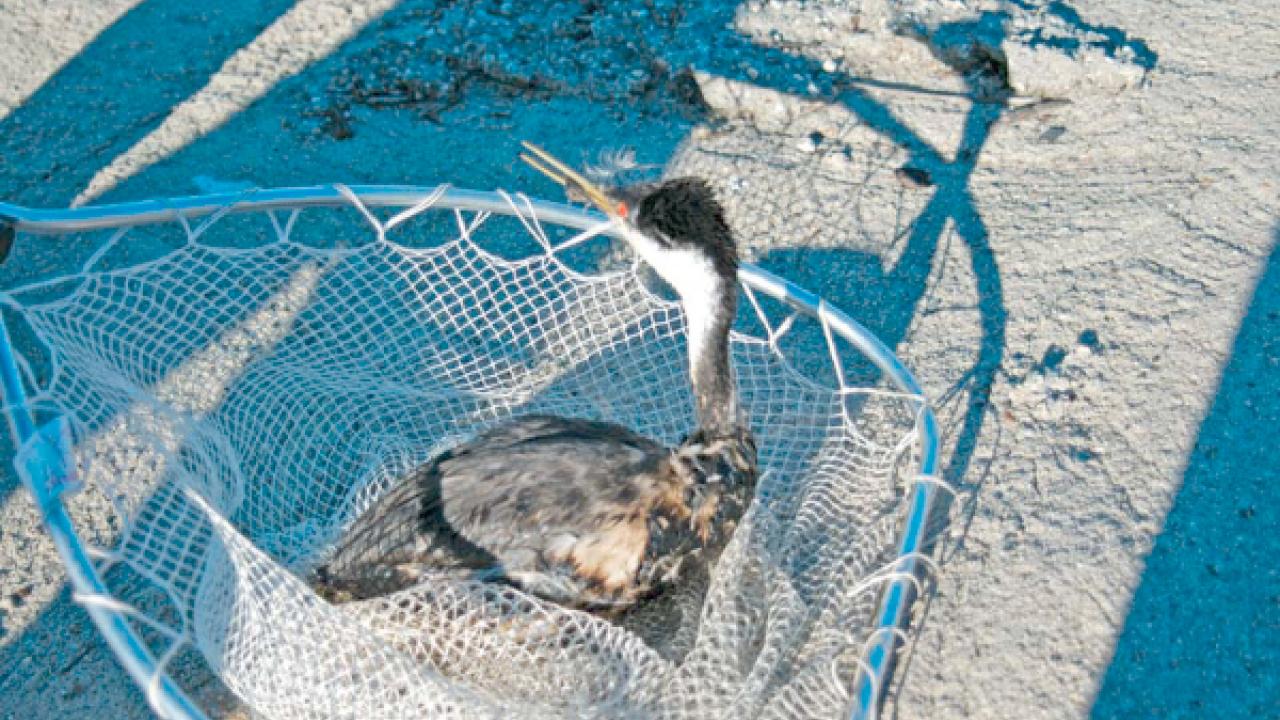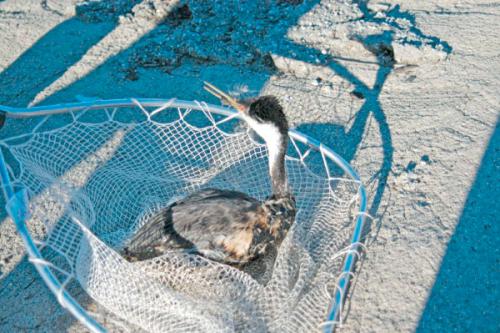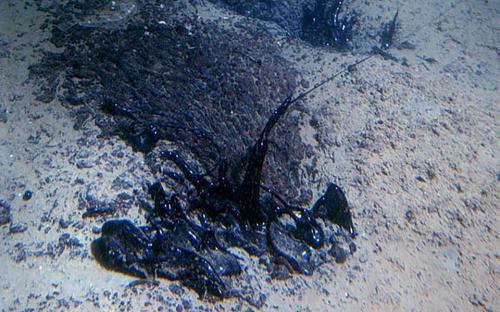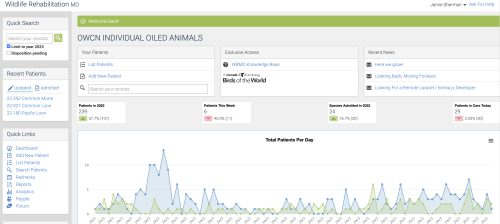
'Tis the Season...for IOA's

When many of us think about oiled wildlife, our minds immediately jump to the worst – a massive oil spill on the coast with hundreds of seabirds washed up on the beach, or the inland spills of late – Tanzanite Park, Toro Canyon, Cuyama. But, did you know that the Oiled Wildlife Care Network supports our member organizations in caring for hundreds of individually oiled animals each year? In fact, since Refugio, our individually oiled patients have far outnumbered our spill patients
The Individual Oiled Animal (IOA) program was created to prepare OWCN member organizations for spill response by utilization of OWCN animal care protocols while rehabilitating animals contaminated with unidentified sources of petroleum. Additionally, with the implementation of OWRMD we are able to monitor the number of oiled animals admitted to our member organizations in real time, creating an “early alert system” in case of an unreported or undetected oil spill. Oil samples collected when these animals are processed can be used to better characterize environmental contamination from unknown sources of petroleum through chemical fingerprinting performed at the Office of Spill Prevention and Response (OSPR) Petroleum Chemistry lab.

What are these “unknown sources of petroleum” you ask? Well, most commonly they are natural petroleum seeps, but can also include leaking shipwrecks or vessels legally/illegally cleaning bilges. Self admittedly, before I joined the OWCN I had no idea that natural petroleum seeps existed, despite the fact that they represent the largest source of oil entering the ocean worldwide. In fact, they account for nearly 50% of the oil released into the ocean each year! Natural seeps occur through fractures or fissures in sediment either on the ocean floor or on land.
Have you ever walked along the beach in Santa Barbara and noticed tar balls on the bottoms of your feet – that’s natural seep! The waters off the coast of Santa Barbara are home to some of the most productive marine natural seeps in the world and are responsible for tar balls washing ashore all the way from southern California to the San Francisco Bay. The oil here originates from fissures in the Monterey Formation sediment and represents one of many offshore seeps on the California coast. Seabirds who inhabit these waters are subject to becoming oiled from these natural seeps.

The IOA program has allowed us to monitor trends in oiled birds dating back to the 1990s. One of the interesting things we’ve found is that there is actually an “oiled bird season” in California from December to March. A study published by our colleague at OSPR, Laird Henkel and fearless leader, Mike Ziccardi found evidence that rainfall and swell patterns may be related to the observed seasonality. In it's early phase, the OWCN IOA program was integral in helping prove that the S.S. Jacob Luckenbach was responsible for many of the winter events in the late 1990s, which then led to its eventual lightering and decrease in risk to Farralones seabird populations. As you can imagine, with this years unprecedented rainfall, we’ve had an unprecedented year of IOA’s from natural seeps with over 250 birds since December 2022!
I’d like to extend a special thank you to our hard-working member orgs who have been providing exceptional care for this influx of oiled birds in addition to their regular patient loads. We are incredibly thankful for your continued commitment to oiled wildlife during spills and non-spill times!
